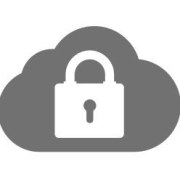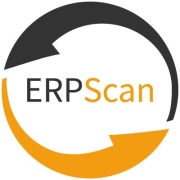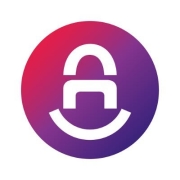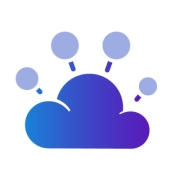Application Security Tools are essential for safeguarding software applications from potential threats and vulnerabilities, ensuring data integrity and protection.
These tools play a crucial role in the software development lifecycle by identifying, mitigating, and preventing potential security threats. They offer a range of functionalities, from static and dynamic analysis to runtime protection, allowing developers to maintain robust security postures. Many organizations leverage these tools to stay compliant with industry standards and regulations.
What are the key features users can expect?
What benefits should users consider?
In financial services, these tools are used to protect sensitive customer data and comply with stringent regulatory standards. Healthcare providers adopt these solutions to safeguard electronic health records and maintain patient privacy. E-commerce businesses rely on them to secure payment information and build customer trust.
Application Security Tools provide organizations with the means to proactively secure their software, ensuring robust protection against a growing array of cyber threats and vulnerabilities.

















































































Application Security vs Software Security
Software and the infrastructure on which the software runs need to be protected. This involves both software security, which is proactive and takes place in the pre-deployment phase, and application security, which is reactive, taking place once the software has already been deployed.
Software security is about designing and building software that is secure.
It involves a holistic approach to improve your organization’s information security posture, safeguard its assets, and enforce data privacy.
Software defects can be exploited by malicious intruders and used to hack into systems. Internet-enabled software presents the most common security risk, and as software becomes more complex, the problem only grows.
Secure software is software that is engineered to continue to function correctly even under malicious attack. To ensure that software is secure, security must be built into all phases of the SDLC (software development life cycle).
Software security activities take place during the design, coding, and testing phases, and may include:
Application security, on the other hand, is about protecting software and the systems run by the software after it has been developed.
Application security activities include:
All applications have security flaws. No app is perfect. The faster and sooner in the development process you can find and fix these flaws, the better off your enterprise will be.
With today’s continuous deployment and integration of applications, apps are being updated and refined constantly. This means that security tools need to keep the pace, finding issues with code much faster than they did in the past.
Interestingly enough, as new applications continue to come out, new vulnerabilities are constantly introduced. We are actually creating many of the tools that cybercriminals use against us and building them right into our applications.
Your organization needs an application security program in order to ensure that as your apps are developed and managed, they are secure and are not opening your company up to attack.
There are four main reasons why application security is important:
One of the reasons apps are such a popular target is because organizations are not careful enough about securing them. In fact, 79% of developers have an ineffective application security process or none at all. While businesses spend billions securing their hardware, network, and perimeter, they are not investing sufficiently in the security of their applications.
You need to secure your apps because:
1. Your applications are inextricably tied to the success of your business. Insecure applications equal an insecure business.
2. Most, if not all, apps are vulnerable. According to a report by Veracode, 70% of all applications they looked at had at least one of the top 10 web vulnerabilities.
3. Apps are the number one attack target and attacks against them are growing by more than 25% per year.
4. You can’t afford not to. Data breaches cost businesses around the world hundreds of millions of dollars. If you experience a data breach, you will have to deal with:
RASP is a technology that is designed to detect attacks on an application in real time. When an application begins to run, RASP kicks in and analyzes the app’s behavior as well as the context of that behavior in order to identify threats that might have been overlooked by other security solutions..
RASP operates on the server the app is running on, and can protect both web and non-web apps. It makes sure that all calls from the application to the system are secure and directly validates data requests inside the app.
When a security event occurs, RASP takes control of the app. It can be set to diagnostic mode, in which case an alarm will alert the IT department that there is a problem. Or it can be set to protection mode, in which case it will try to stop the event by preventing the execution of an app or terminating the user’s session.
The application layer is the number one attack surface for hackers - 84% of cyber attacks occur on the application layer. You should be building security into the software development life cycle (SDLC). Below are four best practices for secure application development:
Application Security Tools can seamlessly integrate into DevOps workflows to automate security testing and vulnerability management. By incorporating these tools into the CI/CD pipeline, you ensure continuous security monitoring without disrupting development processes. This leads to faster detection of vulnerabilities, allowing you to address security issues early in the development lifecycle, thus reducing the risk of deploying insecure applications.
What features should I look for in Application Security Tools?When selecting Application Security Tools, prioritize features such as real-time threat detection, automated scanning for vulnerabilities, and compatibility with existing platforms and languages. Look for tools that offer detailed reporting, easy integration with DevOps practices, and robust remediation guidance. A user-friendly interface and strong customer support can also enhance your security management efforts.
How do Application Security Tools handle outdated components?Application Security Tools efficiently identify and alert you to the presence of outdated or vulnerable components within your codebase. They conduct automated scans to detect these components and suggest updated versions or patches. Having this capability allows you to quickly address security risks associated with legacy software components, greatly enhancing the overall security posture of your applications.
Can Application Security Tools help with compliance requirements?Application Security Tools play a crucial role in ensuring compliance with industry regulations and standards. They provide automated compliance checks, generate necessary audit trails, and offer comprehensive reports that align with regulatory requirements. Utilizing these tools helps maintain adherence to GDPR, HIPAA, and other compliance standards, minimizing legal risks and protecting your organization’s reputation.
How do Application Security Tools contribute to threat intelligence?Application Security Tools use advanced threat intelligence to anticipate and mitigate potential security risks. They gather insights from global security incidents, identify emerging threats, and update defenses accordingly. This proactive approach not only protects your applications from known vulnerabilities but also guards against new, sophisticated threats, keeping your application environment secure.